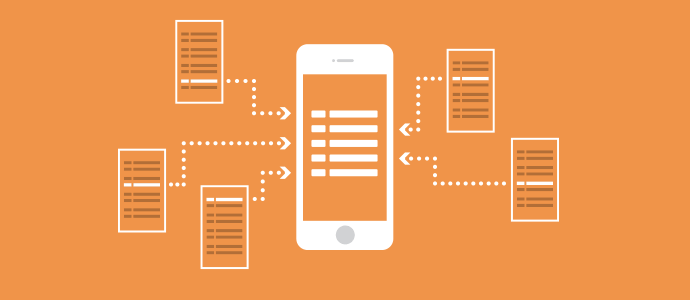Admit it. If you're a productivity or "getting things done" nut, it all probably started with that dog-eared copy of Stephen Covey's The 7 Habits of Highly Effective People you have sitting on the shelf above your desk or in your home office. It provides a powerful and succinct blueprint for how to improve performance, both at an individual and a team/organizational level.
And in the 18 months that we've been conducting detailed interviews with sales professionals, it has become quite clear that one of the most important habits when it comes to improving your sales process is habit number 2: begin with the end in mind.
If you don't do this, you often end up having to apply band-aids to problems that never needed to exist in the first place. Take trying to improve CRM data quality, a critical goal for most sales organizations. Here are two war stories that I've heard:
- Early in their sales ops career, one director at a Fortune 1000 company started trying to track several critical new pieces of deal information, figuring reps would eagerly provide the data to improve forecasting—but then had to start withholding commission checks to incent them to make their updates.
- Another was sold by a consultant on the promise of a gamification system to drive higher rep usage of their CRM. An interesting idea, but (surprise!) it turned out that sales reps were far more interested in getting to President's Club than earning the Most CRM Logins badge. If rep engagement was the real goal, then it might have helped to think about the problem with the real end in mind instead of jumping ahead to an answer.
Before a sales ops team rolls out any new solution to the sales force—productivity, expense reporting, forecasting, or whatever—it's important to step back and be sure that it's going to achieve the goal that matters. And using a checklist can help:
- Listen to sales reps: Sales ops can analyze all day long but cannot know as much as reps in the field know about their customers. Listen to your reps. Hear about their workflows and how they access information. And understand their challenges before working toward a solution to meet their needs.
- Personalize the end-user experience: High-performing reps and sales teams like to customize the way they sell to differentiate themselves. Figure out how their mobile devices can serve as personal assistants to meet their unique needs.
- Involve key constituents in proposed changes: Even if reps are unhappy with the current SFA or CRM system, the SFA/CRM administrator should be included in all discussions of change.
- Keep it simple: Almost universally, sales reps tell us that CRM is too complicated. Simplify the number of fields that matter and then figure out the best and most efficient way for reps working in the field all day to update them.
- Get a core group of early adopters to test new solutions and improvements: Invite reps who are most enthusiastic about trying new things in their constant search for productivity improvements as well as those who are the biggest naysayers to be part of your testing group. These team members should also be willing to tell you the truth about what works and what doesn't. Also invite a combination of reps who are new and more experienced with your business. Their perspectives will be different. And if you're a tech business, be sure to also invite system engineers, as they often embrace new technologies the fastest.
- Deliver quick wins: After you talk to reps, don't wait to plan a 6, 12, or 18-month enterprise upgrade when you can use mobile and cloud platforms to roll out something in a week or less. Show them that you are listening. Then make sure the first phase (not the third or fourth phase) of your rollout provides capabilities that help reps sell more immediately.
- Iterate: If something isn't working, admit it, fix it, and move on. There is no reason to inflict any additional pain on reps if something isn't working. With cloud and mobile technologies, quick fixes can be rolled out in minutes, hours, and days—not weeks, months, and years.
There are many different ways to accomplish the same goal—but they have widely varying results. This is where I recommend starting if you want to solve a sales process challenge. What would you add to it? I'd love to hear your comments.


